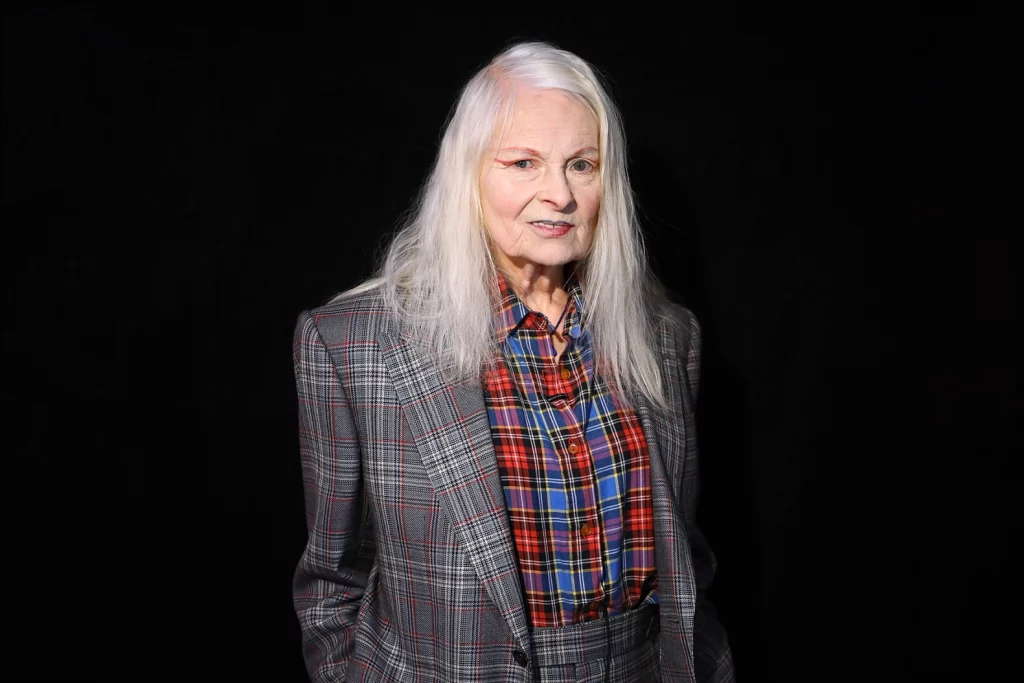Westwood rose to prominence as a major fashion designer in the 1970s as a result of her controversial works, which merged punk sensibility with feminine forms. She was known as the “High Priestess of Punk” and was considered one of the most influential fashion icons to emerge from the United Kingdom.
Vivienne Westwood, the designer who supercharged British fashion and took parts of punk and new wave style to the public with her designs beginning in the 1970s, died on Thursday in Clapham, South London, according to a tweet from the official account of her namesake fashion business. Her designs were crucial for introducing punk and new wave aspects into the mainstream. She was 81 years old. According to the statement, she died “peacefully and surrounded by family.” The statement did not comment on the cause of her death.
The tweet goes on to suggest that the world needs more people like Vivienne to bring about great change.
Andreas Kronthaler, her husband and an artist who worked with her, said in a statement, “I will keep Vivienne in my heart.”
“We have been working right up to the very end, and she has supplied me with a significant amount of things to fulfill.” “I appreciate it very much, honey,” he said.
Vivienne Isabel Swire was born on April 8, 1941, in Cheshire, England; her family moved to Harrow, Greater London, in 1954. There, Westwood was born. She began by studying metalsmithing, but she quickly dropped out and began working in a factory before becoming a teacher. She also made jewellery and had a kiosk on London’s Portobello Road where she sold her creations. Westwood began the chapter of her life that would make her a controversial public figure in the decades that followed after a hurried marriage to Derek Westwood, a factory apprentice, and the birth of their son, Benjamin: Malcolm McLaren, the manager of the punk band Sex Pistols, introduced her to the band.She began working with McLaren on the design of apparel, which was later worn by the band, and the two of them founded the SEX store on London’s King’s Road. It was a popular hangout for renowned punks until it closed in 1976, but the shop was noted for selling eye-catching design statements that were unlike anything else in street fashion at the time.
“Vivienne and Malcolm use garments to shock, upset, and evoke a reaction, but also to urge change,” remarked Viv Albertine, guitarist for the punk band The Slits. An irreverent mentality manifested in sartorial form, as seen in sweaters knit so loosely that they were see-through and shredded and degraded t-shirts with visible seams and labels. punk, as evidenced by their denim choice. “These thoughts are represented in the music that we make,” Albertine wrote. “It’s OK to be flawed; it’s OK to reveal the inner workings of your life and your thoughts through the music you make and the clothes you wear.”
In 1981, Westwood and McLaren debuted their first notable compilation, Pirate, which was released under the World’s End label. Westwood’s influence grew during that time, even though the connection didn’t last until the end of the decade.
“I was messianic about punk, exploring if one could put a spoke in the system in some way,” she said in an interview with Time magazine. She was able to sell t-shirts with Queen Elizabeth II’s visage while wearing a safety pin pierced through her top lip, which surprised and delighted street style fans. The Queen bestowed the Order of the British Empire on Westwood in 1992 in appreciation of her tremendous contributions to the fashion industry. In the tight-skirted suit she wore to the ceremony, the fashion designer appeared to be the epitome of ladylike grace. When she swirled for the photographers, however, the swirl of her skirt revealed that she was only wearing pantyhose beneath the costume, not underwear.
She made a name for herself by designing punk-scene attire, but she later adapted her edgy sense to the study of how high-society women dress. She frequently twisted structural tailoring techniques, exposing seams, and otherwise turning the conventional and genteel on its head to create a more textured, fascinating, and provocative take on traditional clothing.The “mini-crini,” an ultra-short version of a classic crinoline, became Westwood’s hallmark silhouette.
Dame Vivienne Westwood was named British Designer of the Year three times in appreciation of her many achievements in the world of British design. Her influence can be seen everywhere, from the famous people she has dressed for red carpet events to a three-strand pearl necklace called “the TikTok necklace” to the flight attendant uniforms she designed for Virgin Atlantic to the wedding dress Carrie Bradshaw wore in the first Sex and the City movie (yes, the one with the bird-decorated headpiece).
Westwood walked the runway with her models, all of whom wore badges with Manning’s face and the phrase “truth,” as she dedicated one of her 2013 collections to Chelsea Manning. Westwood strolled down the runway with her models. In the year 2020, she took part in a rally in support of Julian Assange outside a London criminal court. She accomplished this by suspending herself in a birdcage 10 feet above the ground and screaming, “The canary in the coal mine!” She also appeared in support of PETA as well as numerous other climate change-related concerns.
Above all, Vivienne Westwood believed in the power of expression and intelligence, and she saw fashion as a way to articulate these ideas through visual grammar. Fashion, as she previously stated, “is life-enhancing, and I believe it’s a beautiful, generous thing to do for other people.” Fashion can improve one’s quality of life.
